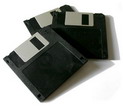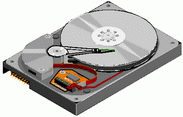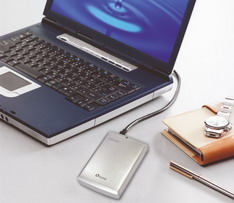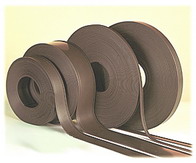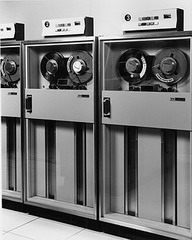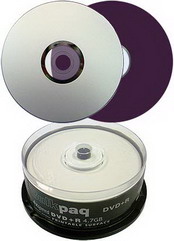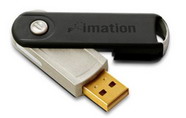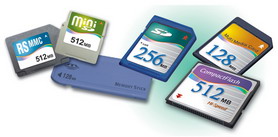a magnetic disk is a type of data storage that uses magnetic patterns on a circular surface.Magnetic storage uses different patterns of magnetization in a magnetizable material to store data and is a form of non-volatile memory. The information is accessed using one or more read/write heads.
A memory device, such as a floppy disk, a hard disk, or a removable cartridge, that is covered with a magnetic coating on which digital information is stored in the form of microscopically small, magnetized needles.
The primary computer storage device. Like tape, it is magnetically recorded and can be re-recorded over and over. Disks are rotating platters with a mechanical arm that moves a read/write head between the outer and inner edges of the platter's surface. It can take as long as one second to find a location on a floppy disk to as little as a couple of milliseconds on a fast hard disk. See hard disk for more details.
Tracks and Spots
The disk surface is divided into concentric tracks (circles within circles). The thinner the tracks, the more storage. The data bits are recorded as tiny magnetic spots on the tracks. The smaller the spot, the more bits per inch and the greater the storage.
Sectors
Tracks are further divided into sectors, which hold a block of data that is read or written at one time; for example, READ SECTOR 782, WRITE SECTOR 5448. In order to update the disk, one or more sectors are read into the computer, changed and written back to disk. The operating system figures out how to fit data into these fixed spaces.
Fixed Disk:
Hard Disk otherwise referred to as HDD. It can have one or more disc platters made of aluminum alloy or glass with a thin magnetic layer bond. These magnetic disks or platters are sealed within the enclosure. Size 1.8", 2.5", 3.5", 5.25", 8", 12"
Zip Disk
A memory device, such as a floppy disk, a hard disk, or a removable cartridge, that is covered with a magnetic coating on which digital information is stored in the form of microscopically small, magnetized needles.
The primary computer storage device. Like tape, it is magnetically recorded and can be re-recorded over and over. Disks are rotating platters with a mechanical arm that moves a read/write head between the outer and inner edges of the platter's surface. It can take as long as one second to find a location on a floppy disk to as little as a couple of milliseconds on a fast hard disk. See hard disk for more details.
Tracks and Spots
The disk surface is divided into concentric tracks (circles within circles). The thinner the tracks, the more storage. The data bits are recorded as tiny magnetic spots on the tracks. The smaller the spot, the more bits per inch and the greater the storage.
Sectors
Tracks are further divided into sectors, which hold a block of data that is read or written at one time; for example, READ SECTOR 782, WRITE SECTOR 5448. In order to update the disk, one or more sectors are read into the computer, changed and written back to disk. The operating system figures out how to fit data into these fixed spaces.
TYPES OF MAGNETIC DISKS
All magnetic disks come in the form of round platters. These disks are available in different sizes, shapes and designs. Some are attached to the read/write head assembly whereas some are available in the form of removable disks. Broadly, magnetic disks can be classified into three types: floppy disk, hard disk and zip disk.
Floppy Disk
A floppy disk is a round, flat piece of Mylar plastic coated with ferric oxide (a rust-like substance containing tiny particles capable of holding a magnetic field) and encased in a protective plastic cover (disk jacket). It is a removable disk and is read and written by a floppy disk drive (FDD), which is a device that performs the basic operation on a disk, including rotating the disk and reading and writing data onto it. The disk drive's read/write head alters the magnetic orientation of the particles, where orientation in one direction represents “1” and orientation in the other represents “0”.
Basically, a floppy disk drive reads and writes data to a small, circular piece of metal-coated plastic similar to audio cassette tape.- Both use a thin plastic base material coated with iron oxide. This oxide is a ferromagnetic material, meaning that if you expose it to a magnetic field it is permanently magnetized by the field.
- Both can record information instantly.
- Both can be erased and reused many times.
- Both are very inexpensive and easy to use.
Fixed Disk:
Hard Disk otherwise referred to as HDD. It can have one or more disc platters made of aluminum alloy or glass with a thin magnetic layer bond. These magnetic disks or platters are sealed within the enclosure. Size 1.8", 2.5", 3.5", 5.25", 8", 12"
Zip Disk












